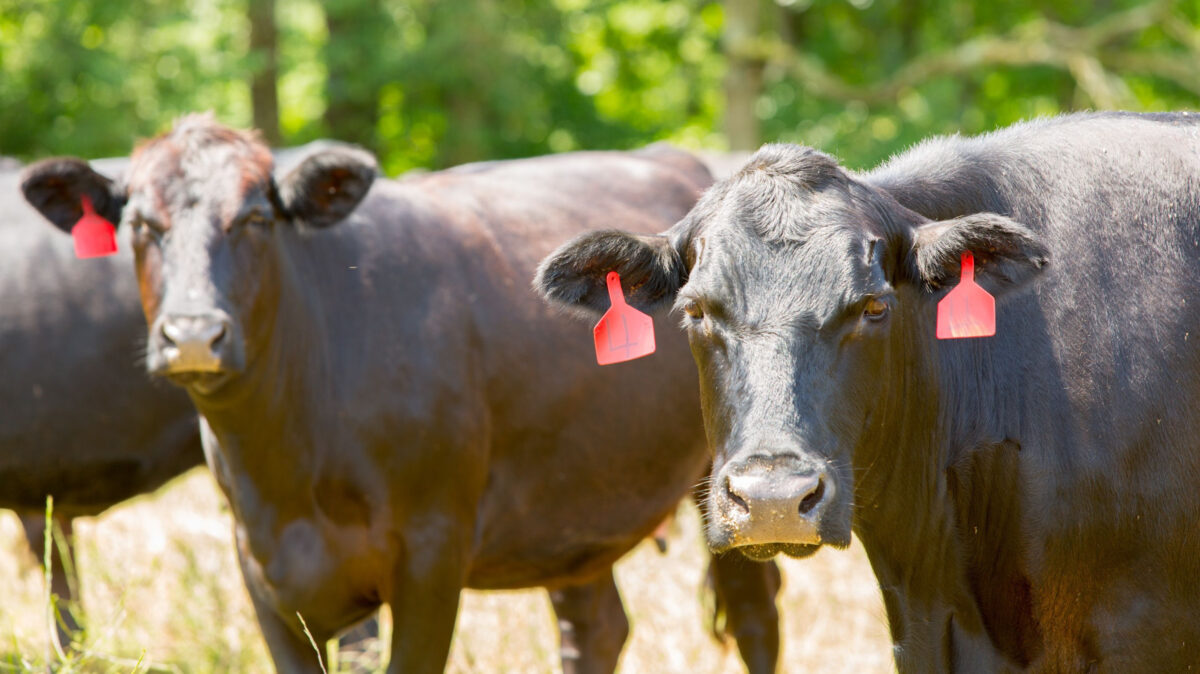January Cattle Inventory and Cattle on Feed Reports
TOPICS
USDAMichael Nepveux
Economist

photo credit: AFBF
Michael Nepveux
Economist
Last week, USDA released its biannual U.S. cattle inventory report showing U.S. cattle totals as of January 1, following its monthly cattle on feed report the week before that. The reports provide inventory data for the nation’s cattle, including estimates of the number of breeding animals for beef and milk production, as well as the number of animals placed on feed every month. The inventory report showed the total number of cattle and calves slightly below a year ago and mostly in line with expectations, while the monthly on-feed report surprised analysts with bearish placement data.
Cattle Inventory
Overall, the January cattle inventory report does not show any dramatic changes in the trajectory of the cattle industry. As of January 1, all cattle and calves in the U.S. totaled 93.595 million head, slightly below the 93.793 million head reported a year ago. Generally, the levels reported were somewhat in line with industry expectations. This report did include somewhat significant downward revisions to previous years’ estimates, which means production is likely lower than originally thought. These revisions for July 2019, January 2020 and July 2020 were made after reviewing calf crop, official slaughter, import/export data and new survey information.

Of this inventory, all cows and heifers that have calved totaled 40.6 million head. Beef cows dropped slightly from last year, coming in at 31.2 million head compared to 31.3 million head in 2020, while milk cows were up by 100,000 head over 2020, an increase of roughly 1%. In contrast to beef cows showing a decrease year over year, beef replacement heifers were up slightly over 2020. At first glance, this is somewhat obfuscating if we are looking at expansion or contraction (although beef cow decline outpaced replacement heifer expansion). Analysts were actually expecting producers to hold back fewer beef heifers for replacement, so this increase was unexpected. Both steers and heifers weighing 500 pounds and over were mostly in line with 2020, with heifers dropping a modest 25,000 head and steers increasing by a bit over 50,000 head.
A bigger story in this report concerned the calf crop for 2020, which USDA pegged at 35.136 million head. Calves born in the first half of 2020 were estimated 25.8 million head, a 1% decline from the first half of 2019. Calves born during the second half of 2020 were estimated at 9.39 million head, meaning the years total was looking at about a 1% decline from 2019. This report’s calf crop for the first half of 2020 showed a pretty sharp decline from what was initially reported in the July report. Moving forward, this revelation could be supportive of all class prices. Even as the cow herd’s decline was relatively small, fewer calves were produced which could limit fed cattle supplies down the road. This estimated calf crop will be the smallest we have seen since 2016 and continues a downward trajectory.

Cattle on Feed Report
This report showed a total inventory of 11.965 million head on feed in the United States on January 1. This steady year-over-year number was largely within analysts’ expectations, if at the high end.

The big surprise in this report was the placement numbers. Placements in December totaled 1.842 million head, 1% above 2019 levels but a shock to analysts who had largely been expecting a decline in the number of placements. This placement number is the 2nd largest total for December since the data series started in 1996. Instead of getting bullish news, the industry got somewhat bearish news from this report for later in the year. Marketings of fed cattle were up around 1%, which was largely in line with expectations. This report also included placements by weights, and for the most part, we saw placements of heavier cattle increase compared to a year ago. The 900 to 1000 pound category was the largest in terms of gains, up nearly 16% compared to a year ago. Animals in categories from 700 to 900 pounds were also up, with lighter weight classes seeing a decline in placements.
Since the September report, we had largely been of the opinion that we had worked our way through the backlog of animals that had accumulated in late spring as a result of the COVID-19 disruptions at slaughter plants. Since September, the number of animals on feed over 120 days had remained above recent levels but followed seasonal patterns until December when we saw a slight divergence. This report saw that December pattern continue somewhat. Cattle on feed more than 120 days clocked in at around 4 million head, the largest we have seen since August of last year. Given the typical seasonality that this category follows, we can expect that number to increase over the next few months.

Summary
While the cattle inventory report was relatively in line with expectations, the cattle on feed report contained some surprises. The cattle inventory is largely in line with year-ago levels, with the biggest surprises being revisions in inventory numbers from previous years and a decline in the 2020 calf crop. The cattle on feed report surprised analysts with an increase in placements when most had been looking for a decline. That report also revealed increasing numbers of cattle on feed over 120 days, with that number expected to climb for the next few months.